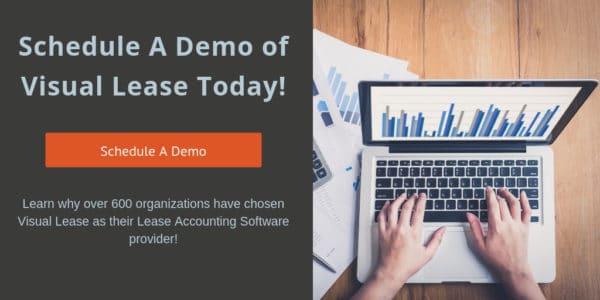The challenges of lease accounting data collection for distributed firms
Getting ready for compliance with the new lease accounting standards (FASB ASC 842 and IFRS 16) is a complex and time-consuming process. But the challenge is greater for companies who have widely distributed lease data, such as firms with many physical locations, and parent companies with many subsidiaries.
If your company is facing this challenge, you’re probably wondering how to accomplish some important pieces of the process:
- Collecting lease accounting data from many different people, systems, and locations.
- Setting up a lease accounting and lease management system that meets everyone’s needs.
In this article, we’ll share some tips to help you find and collect all your lease data, as well as strategies to make your compliance process faster and smoother.
Lease data collection tips: how to find all your lease data
One of the reasons lease accounting data collection is so complicated is the wide variety of assets that companies lease.
It’s obvious to look for real estate leases, office equipment leases, and vehicle leases. But there are other leases that may not immediately come to mind, such as furniture or construction equipment. And, there are items that are considered leases even if the contract doesn’t say so, such as assets that are included with service agreements.
When those assets are distributed across many locations and regions, it’s even more difficult to find everything.
Here are the lease data collection steps we recommend. Share this process with each stakeholder collecting data for their respective subsidiary company or location.
STEP 1: Start with Accounts Payable
Your Accounts Payable teams can provide a list of all recurring monthly payments. This will identify the lease holders and finance companies you are paying. Depending on your records, you may be able to drill down and find information about the leases covered by these payments.
STEP 2: Reach out to those who negotiate and manage leases
If you need more information than you can get from Accounts Payable, contact those who obtain and manage leases. Real Estate, IT, and Procurement should all have records for the leases they manage. Be sure to ask for all the documents related to each lease. For example, Real Estate should provide commencement letters along with the lease contracts.
STEP 3: Turn to Procurement and Legal to find embedded leases
Embedded leases can be found in service contracts and other types of agreements. Ask your Procurement and Legal teams to check all contract records for assets you use as part of a contract, even if the contract doesn’t specify the word “lease.”
Learn how to identify embedded leases: Embedded Leases Accounting: Do Your Contracts Contain Leases?
STEP 4: Ask lessors and finance companies for lease records
If you don’t have records of all the leases covered by a recurring payment, OR you don’t have all the data you need to track for each lease, it’s time to turn to the lessors. Since they need to do their own accounting for leases, they should be able to provide the details you’re missing.
Now that you know how to tackle lease data collection, here’s what you need to know to implement the project throughout your organization.
Tips for lease accounting project planning
Plan your timeline conservatively
As you work out your timeline to lease accounting compliance, plan for more time than you think you’ll need, especially for lease accounting data collection. Those of us who have been through this process with hundreds of public companies over the past year know that most companies underestimate the effort required for lease data collection. Consider the steps involved in collecting lease data:
- Identifying everyone in your organization who may have lease data somewhere.
- Figuring out what data you need to collect for every lease.
- Devising a method for collecting the data in a central location.
- Reaching out to stakeholders and asking them to find leases (and waiting for them to do so, when they also have other jobs to do).
- Having lease contracts abstracted to collect all relevant data points.
- If necessary, obtaining translation services for contracts in foreign languages.
- Figuring out where you’re missing data points and doing the research to find that information.
- Testing and validating lease data.
The point is, for most accounting teams there is more to do than you realize at the beginning of the project. And many dependencies and stakeholders to manage. So take that into account in your planning process and start early.
Related Article: Lease Accounting Compliance Deadline: Will You Be Ready?
Make decisions at a global level
When you have a distributed organization, you often have different groups operating independently. That means each subsidiary or location is tracking and using lease data in different ways. If you don’t have visibility into what everyone is doing, you may be considering sending out a survey or otherwise collecting input from everybody about how to set up your lease accounting system. Or every getting everyone involved in choosing the tool.
Here’s our advice based on lessons learned over the past couple of years. Going that route can significantly delay your project. The time it takes to wait for the responses, then figure out how to include every field that everyone asks for, is time you’ll wish you had back later on. Instead, make the decision at a global level about what data you need to track for accounting and lease management purposes (ideally with the help of your accounting advisor and key stakeholders), and move forward from there.
Read the last tip for advice on getting buy-in and cooperation from all those who will be using the new lease system.
Set up spreadsheets for lease data collection
The simplest way to do lease data collection in a distributed organization is by using spreadsheets. Once you know the data fields you need to collect, create a spreadsheet for each stakeholder collecting lease data.
As you receive the spreadsheets, you can import the data into your lease accounting system. Once you have data in the system, you can begin to test and validate.
IMPORTANT: Be sure to make accounting decisions that impact data collection (such as practical expedients you plan to take) as early in the process as possible.
Share the benefits of your lease accounting and management system
Once you’ve chosen and configured your lease accounting system, you can show it to all your stakeholders when you ask them to collect their lease information. Demonstrating the lease management capabilities and reporting they stand to gain once their data is in place can encourage them to make data collection a priority.
We know that complying with the lease accounting changes is new to most private companies. However, it’s far from new to us at Visual Lease. We have been through this process hundreds of times over, and we are here to help. Don’t hesitate to reach out to us with your questions.

























